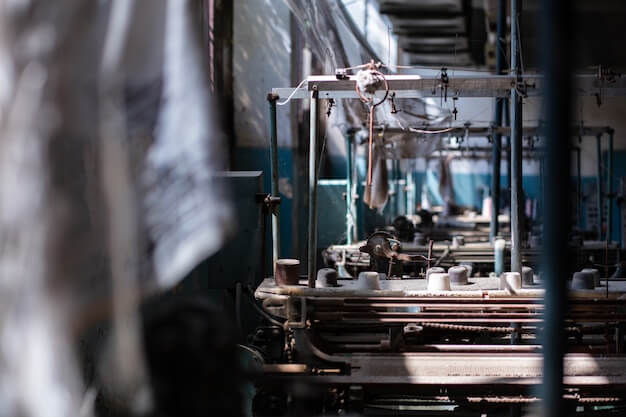Ceramics in CNC: Zirconia vs. Alumina
In the realm of Computer Numerical Control (CNC), ceramics are widely used due to their exceptional mechanical properties, including durability and resistance to wear. Specifically, zirconia and alumina have become standout materials in various manufacturing contexts. Both constitute advanced ceramic materials that afford enhanced performance capabilities compared to traditional metals and plastics. This article aims to juxtapose these two ceramics – zirconia and alumina – elucidating their individual characteristics and determining which offers superior durability based on specific technical principles.
Understanding Zirconia and Alumina in Manufacturing Processes
In the realm of ceramics used in CNC (Computer Numerical Control) manufacturing processes, we primarily encounter two types – zirconia and alumina. While both these materials exhibit excellent mechanical strength, hardness, and wear resistance, their applications and performances differ significantly.
Zirconia, also known as zirconium dioxide, is a type of ceramic that possesses high fracture toughness and chemical resistance. Owing to its innate traits, this white, crystalline oxide of zirconium extensively finds usage in areas demanding exceptional thermal stability, such as dental prosthetics, jewelry, and thermal barrier coatings.
- The remarkable durability of Zirconia stems from its unique ability to resist crack propagation, preventing early breakage or failure.
On the other hand, alumina, formulated from aluminum oxide, proves itself as one of the most cost-effective ceramics for high-performance applications due to its impressive combination of properties like elevated temperature stability, electrical insulation, and commendable resistance against corrosion.
- Critical industries such as electronics, telecommunications, and medical technology often bank on Alumina’s high dielectric strength, smooth surface finish, and rigidity for producing superior-quality products.
Deep dive into Zirconia in CNC Processes
Zirconia is a high-performance ceramic material widely used in CNC machining due to its:
- Exceptional hardness and wear resistance
- High fracture toughness and impact resistance
- Biocompatibility, making it suitable for medical applications
Exploration of Alumina
In CNC operations, using alumina has noted advantages. For instance, being one of the toughest materials available, it guarantees durability and resistance to wear. This characteristic makes it ideal for applications in high-temperature environments where other materials are prone to fail. In an actual scenario, consider a high-speed machining operation; here, wear-resistant tools made from alumina could potentially outperform alternatives.
However, there are also certain drawbacks associated with alumina – namely its less-than-optimal fracture toughness compared to other ceramic materials like zirconia. It means that under intense pressure or sudden impact, tools crafted from alumina might chip or even break.
- Advantages: High durability, heat-resistance, wear-resistance
- Drawbacks: Lower fracture toughness resulting in increased susceptibility to chipping or breaking upon abrupt impacts
Comparative Analysis: Zirconia vs Alumina for Durability
In this discussion focusing on the durability factor of ceramics in CNC, it’s important to first explore zirconia. This compound exhibits a high wear resistance which significantly contributes to its durability. For instance, applications like dental crowns and bridges are made from zirconia due to its ability to withstand wear over long periods of time. By contrast, alumina is remarkably robust as well, with a track record lasting decades in demanding industrial settings such as textile ceramic guides where minimal wear prolongs machinery life span.
- Zirconia: Zirconium dioxide or zirconia has impressive mechanical strength and particularly high fracture toughness. Its ideal utilization can be witnessed in heavy-duty cutting tools and precision ball valves owing to their exposure to high stress that demands excessive resilience.
- Alumina: Aluminium oxide, often referred to as alumina, offers excellent hardness and strong corrosion resistance. These remarkable features make it a good candidate for use in electronic substrates, seal rings, and even grinding media— all areas demanding utmost durability.
Thus, although both these materials are exceptional in their own rights, they offer variable durability attributes tailored to distinct application scenarios in CNC machining.
Expert Opinions and Current Market Trends in Ceramics for CNC: Zirconia vs. Alumina
Renowned industry veterans predominantly speak to the rise of zirconia in the market as a preferred material choice for certain CNC applications, primarily due to its exceptional hardness and fracture toughness. Meanwhile, alumina, praised by many industrialists for its high-temperature stability and strength, perceives consistent preferences in fields where higher thermal conductivity is required.
- Zirconia: This ceramic’s popularity has been on an upward trajectory lately due to its remarkable mechanical properties and cost-effectiveness. Additionally, experts have highlighted use cases where the slight plastic deformation displayed by zirconia under stress gives it an advantage over other ceramics.
- Alumina: Despite the growing preference for zirconia, alumina continues to hold significant market shares – especially in aerospace, electrical, and electronic industries. Its aptitude at retaining physical and chemical integrity despite exposure to extreme conditions accounts for this persistent demand.
This pattern seems likely to continue amidst these evolving trends within the current ceramics market for CNC operations, but choosing between zirconia and alumina ultimately depends upon application-specific requirements.
Related Posts
- The Role of Precision in CNC Machining: How Tight Tolerances Impact Cost and Quality?
Introduction: Understanding Precision in CNC Machining In manufacturing contexts, precision is epitomized by Computer Numerical Control (CNC) machining. In essence, CNC machining is a process utilized widely within the manufacturing…
- Aluminum CNC Machining Part Production for Custom Solutions
Introduction to Aluminum CNC Machining Part Production CNC (Computer Numerical Control) machining is a subtractive manufacturing technology whereby computer software directs the movement of factory machinery and tools, ensuring precision…
- Unraveling CNC Machining: TIG Vs MIG, Chamfer Vs Fillet( cnc laser cutting machine Truda)
Computer Numerical Control (CNC) machining stands as an advanced manufacturing technique that enhances the efficiency and precision of fabrication processes. Involved in its intricate applications are powerful welding methods like…








